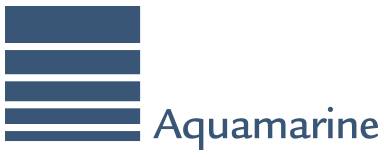GM, Ford Boost Shareholder Payouts in Sign of Detroit’s Optimism
2017-01-11 14:30:43.17 GMT
By David Welch and Keith Naughton
(Bloomberg) — 2017 has been touted in Detroit as the year
that’ll mark the end to a nearly decade-long boom in U.S. auto
sales. And maybe it will. But there’s little sign of that right
now.
One after another this week, the world’s biggest carmakers
signaled they don’t see an end to their prosperity anytime soon.
General Motors Co. on Tuesday projected another year of profit
growth and heaped a $5 billion share buyback plan on top of the
$9 billion it started repurchasing in 2015. Hours later, Ford
Motor Co. added $200 million cash to its regular first-quarter
dividend.
Japanese and German carmakers also joined the hometown
players at this week’s Detroit auto show in expressing optimism.
Nissan Motor Co. — just two months after calling a U.S. market
peak — now sees an even better 2017 after the election of
Donald Trump and the rise in consumer confidence that’s
followed. BMW AG pointed to the good times rolling on Wall
Street as one reason luxury vehicle sales will be sustained.
“The auto industry has benefited from cheap and available
credit and low fuel prices,” said Maryann Keller, an independent
auto analyst in Stamford, Connecticut. “All of that has worked
in the industry’s favor and no one is saying that’s going to
die.”
The optimism is translating into returns for shareholders.
U.S. automakers and suppliers have outperformed the Standard &
Poor’s 500 Index since the beginning of the year, with gains of
7.2 percent at GM and 5.9 percent at Ford. Fiat Chrysler
Automobiles NV, benefiting from a bet on shifting its lineup
almost exclusively to light trucks, has surged 19 percent in
part on speculation it’s more likely to get a pass from a
loosening of environmental regulations under Trump.
GM Forecast
The consistent theme tying together all this positivity has
been the unprecedented appetite for sport utility vehicles. GM
is boosting revenue and profit by introducing new models,
trimming costs and cashing in on the global tilt toward larger
and often more expensive vehicles. As car buyers shift, GM has
three redesigned rides — the GMC Terrain and Chevy Equinox and
Traverse — coming to market this year.
The largest U.S. automaker’s net income should increase to
between $6 and $6.50 a share this year, Chief Executive Officer
Mary Barra said at an analyst conference in Detroit. When 2016
earnings are reported later this month, the company expects to
hit the top of its guidance, Barra said. Standard & Poor’s
lifted GM’s credit rating one level Tuesday to BBB, the second
step above junk.
“It’s very good guidance given a U.S. market that has
plateaued,” said David Whiston, an analyst for Morningstar Inc.,
said of GM’s forecast for the coming year. It shows management
is “not done making the company better.”
After a strong 2016 for the North American market, GM
President Dan Ammann said the company is seeing “more of the
same favorable environment.” The comment echoes Nissan Chairman
Carlos Ghosn, who said Monday that U.S. auto sales may grow
again this year, about two months after his co-chief executive
officer had said the market peaked.
Ford Dividend
Ford, the second-largest U.S. automaker, will pay an
additional $200 million to shareholders beyond its regular
first-quarter dividend and said its 2016 tax rate will be higher
than previously forecast. The company’s regular dividend of 15
cents a share, plus the cash, boosts its total payout to 20
cents a share.
While Ford cut profit forecasts twice during the second
half of last year, a weaker auto market wasn’t the culprit.
Hefty technology investments will cut slightly into the bottom
line this year before profit rises again in 2018, the Dearborn,
Michigan-based company reiterated Tuesday.
Investors and consumers have positive expectations of
policies the Trump administration could implement that “could be
quite attractive” for the economy, Chief Financial Officer Bob
Shanks said in an interview Tuesday, without being specific.
Ford has promised to put 100,000 robot taxis — without
steering wheel, gas or brake pedals — into ride-hailing or
ride-sharing fleets by 2021. It’s also investing $4.5 billion to
convert 40 percent of its lineup to electrified vehicles by 2020
and this month revealed seven of those models.
Cost Vigilance
While the good times for carmakers aren’t going away soon,
the companies need to stay vigilant on costs, according to
Keller, a former Wall Street analyst. Incentives have been
rising and the glut of used cars coming off lease in the next
couple of years will put pressure on vehicle prices and profits,
she said.
“It’s not going down, but the double digit sales growth is
not going to happen,” Keller said. “They have had the wind in
their sails for five years. How can it get better than that?”
–With assistance from Melinda Grenier.
To contact the reporters on this story:
David Welch in Southfield at [email protected];
Keith Naughton in Southfield, Michigan at
[email protected]
To contact the editors responsible for this story:
Craig Trudell at [email protected]
Kevin Miller, Chua Kong Ho




